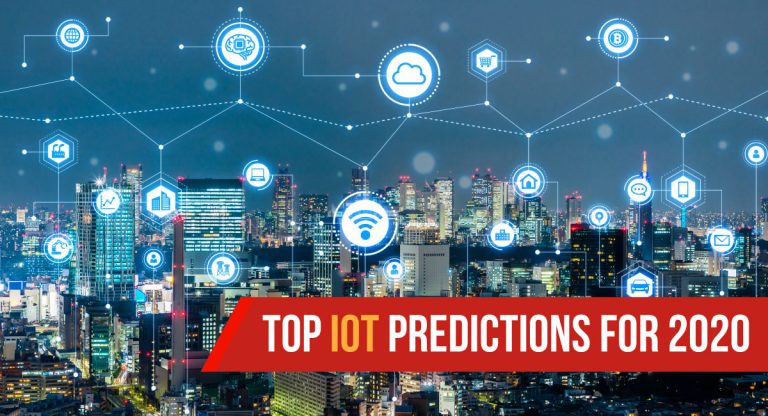Transforming the Field Management Landscape With Hot Technologies
The demand for field service management solutions has been on the rise for a very long time now and it has reached an all time high. According to a recent research by Gartner, the revenue from field service and workforce management systems comes to around $1.3 billion annually. The kinds of technology used for field management has been transforming the way field agents worked in their sites. Field service management solutions have gone a long way in increasing workforce productivity as well as improving collaboration among the field service employees. Now let’s see what other kinds of technologies are set to revolutionize the industry.
Internet of Things (IoT)
The Internet of Things is something that has had a huge impact in terms of productivity, as with this, you can practically access or even process and transmit information from pretty much any object. Machine to Machine communication (M2M) has been in use in the field service industry for quite some time now. With IoT, this system of sending and receiving signals from one device to another can expand and go beyond its boundaries to include a whole network of devices. According to a leading M2M solutions provider, “M2M is essentially about connecting and communicating with a thing, where a ‘thing’ may be a machine, a device or a sensor – basically anything that can send data whereas IoT goes beyond connecting computers with things. It represents things connecting with systems including business applications, ERP, and CRM systems, analytics systems, data warehouses and also people (workers, employees, customers)”. It basically means they have a much larger scope. Their potential is so vast, that it can range from enabling emergency service alerts in the case of search and rescue operations or even helping energy companies detect problems early on using alerts and predictive analysis. For example, a crack in a water pipe or a waste pipe can be identified using sensors and can reported to the control center with the help of alerts. Through this, the technician can repair the damage before it causes any severe problems. Similarly, IoT with cloud-based services and remote machines can send location information, status details as well as other such condition based service information., that can influence the world of field services greatly.
Augmented reality and wearables
Augmented reality is one technology that will definitely have a huge impact on the way field service agents work. When leveraged with wearable technology, workers get to actually experience real world situations and issues with the help of computer-generated sensory inputs such as sounds, videos, graphics etc. For example, a field worker can analyze the equipment or areas he is working on by augmented reality enabled glasses and identify the exact cause of the issue and remedy for it too. Hence, it becomes much easier for him to make the repairs in reality. Thus, augmented reality and wearables are actually 2 faces of a single coin, as one is supplemented by the other. They streamline field service management, introduce new and improved ways of working and interacting with people through Smart Watches, mobile phones, Smart Glasses etc.
3D Printing
This is also a technology that has been in the industry for several years now. It greatly helps field service managers and agents generate parts or equipments that they might need in their work in 3D. For example, if a repair requires a particular equipment or tool or part that is not available with you at the moment or is low on stock, you might need to put off your service visit for days or weeks. With 3D printing, you are relieved of such an issue. It provides an efficient system for parts management. It helps you create anything on the spot, with the help of a 3D printer, provided you have the required diagrammatics for it. According to Gartner, over the next three years, 3D printing is likely to reach a turning point, as the demand for low-cost printing devices is increasing rapidly and its use in industries is also significantly high.
Field service organizations are already using most of these technologies in their daily operations. As a part of our ever dynamic business environment, it is also important to look out for newer technologies and be open to technological changes. Since all of these technologies contribute to the productivity and efficiency of organizations, you need to make use of them in the best possible way. Technological disruption is bound to happen, so might as well make the most of it.
Stay up to date on what's new

Recommended Posts

25 Jun 2020
What Is Fog Computing and How Does It Work?
How Can Your Business Benefit from Fog Computing? How much data do we create every day? The World Economic Forum reports that the entire digital world is expected to reach……

02 Mar 2020
Gearing up for IoT in 2020
How to prepare for IoT in 2020? It’s 2020 already and the Internet of Things (IoT) is here to stay. We’re at the cusp of a new era wherein intelligent digital……

03 Oct 2019
How AI and IoT are Creating an Impact on Industries Today
Can Empowering AI and IoT Bring In Competitive Advantage To Industries? It takes more than forward-thinking employees to gather customer purchasing trends and improve the customer experience. International companies depend……

14 Sep 2019
IoT Implementation: Common Mistakes And Strategies To Tackle Them
Most Common Mistakes To Avoid While Implementing IoT There are many pressing concerns about the possibilities of IoT in businesses. The most common is probably the question, "Is my business……
Featured Blogs
Stay up to date on
what's new










